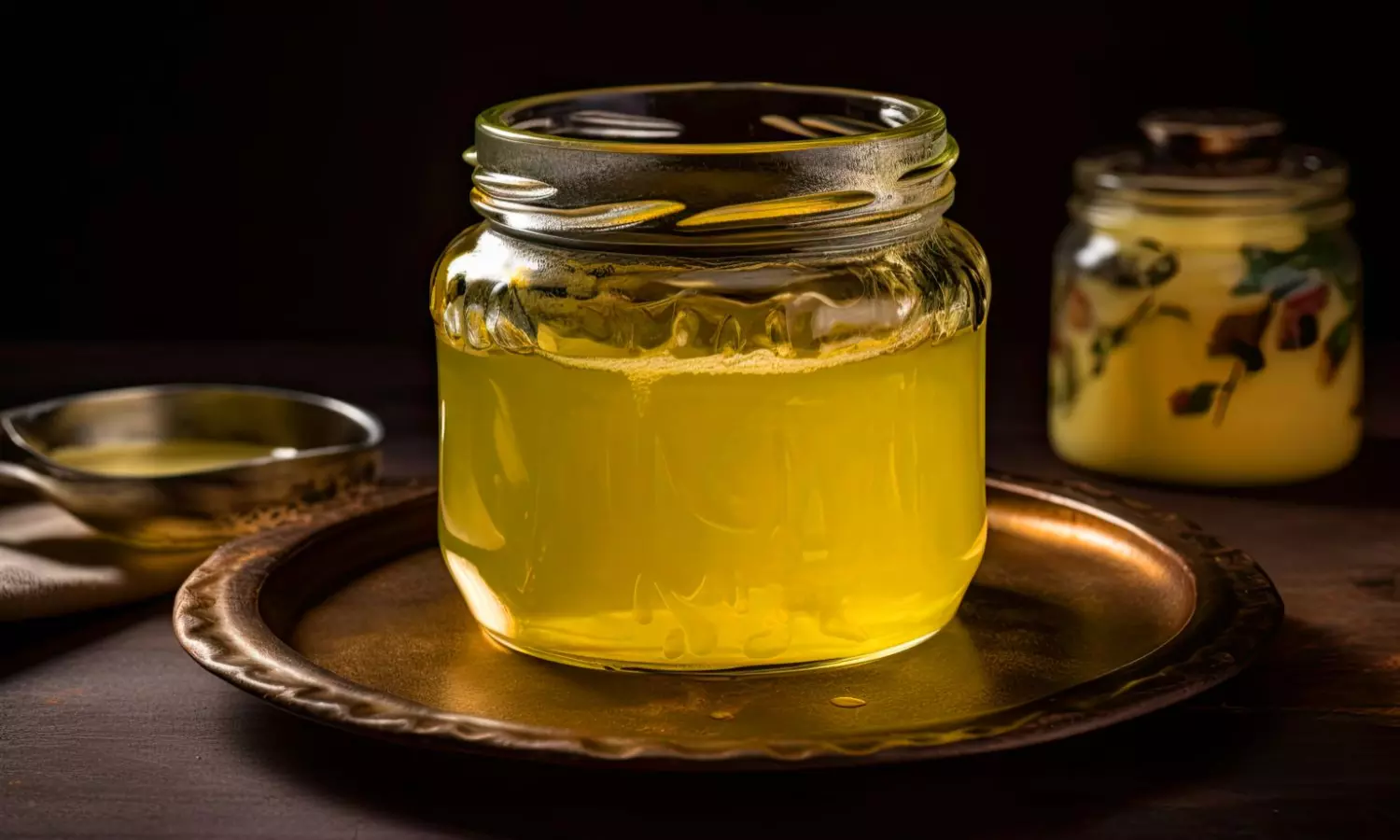The Rise of Ghee: Rediscovering the Health Benefits of this Ancient Superfood
The global rise in ghee’s popularity has prompted a closer look at its incredible benefits. To explore its advantages, we consulted expert nutritionists Kripa Jalan and Harlene Bhasin.
- By Shreya MukherjeeLoading...
- | 26 Sept 2024 10:39 AM IST
 X
X
Who can say no to a little ghee on their chapati or rice? Certainly not us!
Let’s take a trip back to when ghee was considered "liquid gold." Its radiant hue is a testament to our rich traditions and culinary heritage. In the past, ghee was a top alternative to butter, which would spoil quickly in India’s hot climate. Ghee played an essential role in Indian cuisine, Ayurveda, and religious practices. Over the years, this golden elixir has gained popularity worldwide, thanks to its flavor and health benefits. With the rise of high-fat diets, health enthusiasts everywhere are rediscovering this cow-derived treasure.
What really caught their attention? Ghee’s high fat content. Back in the 1970s and 80s, people turned to vegetable oils, believing they were a safer alternative. The assumption back then was that ghee contributed to high cholesterol and heart problems, leading people to use it sparingly. Fast forward 50 years and ghee is making a strong comeback.
In Image (Left-Right): Kripa Jalan; Harlene Bhasin
To take a closer look, when butter is heated to make clarified butter or ghee, the water content evaporates, and the milk solids (which contain proteins like casein and sugar like lactose) separate and are then removed. This process leaves behind pure butterfat. Since lactose is part of the milk solids, the final product is virtually free of lactose once those solids are removed. This makes it suitable for people who are lactose intolerant, as they lack the enzyme (lactase) needed to digest lactose properly. Consequently, clarified butter and ghee can be enjoyed by individuals who would otherwise avoid regular butter due to digestive issues associated with lactose. As Kripa Jalan, Nutritionist and Founder of Burgers To Beasts, says, “Science now highlights the importance of healthy fats for feeling satisfied, balancing energy levels, supporting hormonal health, regulating blood sugar, and even improving brain function. And let’s not forget—they make food taste incredible!”
On the flip side, vegetable oils lack the essential fat-soluble vitamins naturally present in ghee. Many vegetable oils undergo a refining process that involves high heat, chemical treatments, and bleaching to remove impurities, odors, and colors. While this process improves the oil's shelf life and flavor, it also strips away most of its natural nutrients, including essential vitamins and antioxidants. In particular, heat-sensitive vitamins like A and E can be destroyed during refining. Moreover, the refining process often removes healthy fats, leaving behind oils that may be less beneficial in terms of nutritional content. Some vegetable oils may also contain trans fats if they're hydrogenated, which are harmful to heart health. Nutritionist Harlene Bhasin points out, “Many vegetable oils, especially partially hydrogenated ones, contain trans fats, which are associated with increased risk of heart disease.” Meanwhile, ghee offers omega-3 fatty acids and vitamins A, D, E, and K, which support immunity, reduce gut inflammation, and benefit heart health.
When it comes to gut health, ghee might be one of the best remedies in the long run. Ghee is a cornerstone in Ayurvedic medicine due to its powerful benefits for metabolism and gut health. It contains butyric acid, a short-chain fatty acid that nourishes the cells of the intestinal lining, promoting a healthy gut environment and aiding in digestion. Ghee also enhances Agni (digestive fire), which is central to efficient metabolism and nutrient absorption in Ayurveda. By supporting the growth of beneficial gut bacteria and soothing inflammation in the digestive tract, ghee improves digestion, enhances energy levels, and supports overall gastrointestinal function. Its rich nutritional profile makes it a valuable tool in maintaining optimal digestive health.
Ghee is incredibly versatile and can be incorporated into your diet in numerous ways. In Indian cuisine, we use it for cooking, sautéing, or tempering spices and dishes. It lends a rich, nutty flavor due to its high smoke point (around 485°F or 250°C). Unlike regular butter, ghee doesn't burn easily, allowing you to cook at higher temperatures. It's used in Indian curries, dals, soups, and stews. If you’ve ever wondered how your baked goods might taste with ghee, now’s the time to experiment! You can use it to bake cookies, muffins, or bread. You can also use ghee to finish dishes, like melting it over roasted vegetables, drizzling it over mashed potatoes, or even using it in place of olive oil in salad dressings for a subtle twist. And if you’re feeling adventurous, try Harlene Bhasin’s method: “I take one big teaspoon of ghee every morning, melt it on the stove, and drink it.”
However, like all foods, ghee has its limitations. While it’s a good source of healthy fats, moderation is crucial. If you already consume fat-rich foods like flaxseeds, walnuts, or fish, you may want to limit your ghee intake. It’s important to balance your overall fat consumption to maintain a healthy diet. According to Jalan, "1-2 teaspoons per meal is more than enough," though this may vary based on your individual health and medical conditions.
So, now we know just how much goodness we can get from our traditional ghee—but remember, moderation is key!

Shreya Mukherjee
Shreya loves a good Harry Potter conversation when she is not busy figuring out the best toppings for Ramen. An avid reader who enjoys all forms of story-telling, you will find her either reading or binge-watching shows. She also loves spending her weekends taking care of her skin while figuring out which restaurant to get a take-out from.


